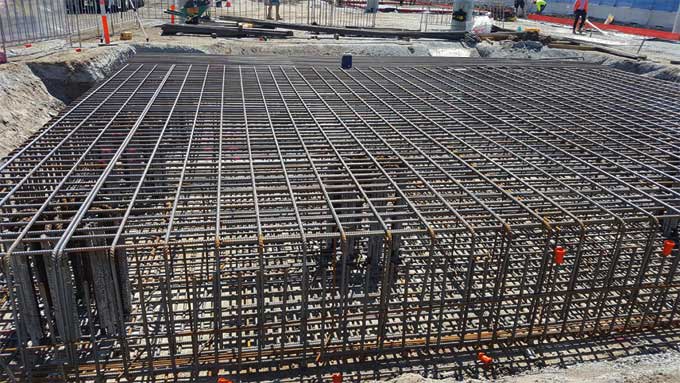
How to determine that you need the Strip Foundation?

The most common kind of foundation is by far the Strip foundation. As the name suggests, a strip foundation is a concrete strip that extends beneath all load-bearing walls. The allowable bearing pressure of the earth and the building load define the width of the strip.
The strip has to be long enough to lay flat. Broader foundations will be required to distribute the weight across the required ground surface due to weaker soils and greater loads.
Depending on the soil characteristics, the depth will also vary. It is important to bury the foundation deeply enough in clay soils, for instance, in order to shield the structure from volume variations caused by the periodic movement of trees in the surrounding area.
For a frost heave policy to work effectively, the sands, gravel, and certain silts must be deep enough to reduce frost heave movement.
Stip Foundation preparations
A few preparations must be made in order to construct the Strip Foundation; these include, but are not limited to:-
1. After the excavations are finished, place a base of sand and gravel mixed before building the Strip foundation.
2. A designed hardwood board with a thickness of around 50 mm must be used to construct the framework of the strip foundation. Someone should be in charge of overseeing the framework's verticality while it is being built.
3. The average height of the structure must be 12 inches above the ground. The preparation of a tiny basis is necessary while building a strip foundation.
4. During the next phase of the foundation's construction, reinforcements must be built. Reinforcement bars can be made from steel or fiberglass, depending on the application. To keep the square cells at a maximum of 16mm, 10 to 12 mm reinforcing steel bars with specifically crafted binding wires should be utilized.
5. Then slowly place the reinforcing bars into the trench gradually while keeping an eye on its notch from the edges. Make sure the recommended padding does not go beyond 50mm.
Types of Strip Foundation
The two main types of Strip foundations can be classified based on their characteristics, and they are as follows:-
Deep Strip type Foundation
Deep strip foundations are the most commonly used type of foundation and are also the cheapest, provided that the soil conditions are suitable as a foundation base. The walls are supported by a reinforced concrete strip.
There is no restriction as to the depth of the trench, but it should have a minimum depth of 40 inches and a minimum width of 24 inches. A minimum depth of nine inches should be maintained when pouring concrete.
Wide Strip type Foundation
Generally speaking, wide strip foundations are used in places with limited load-bearing capacities, and in places with poor soils, the standard strip foundation cannot be used.
A technical solution was developed to prevent wall shearing by enlarging and deepening the structure too much, but this wasn't financially feasible.
A suitable alternative may be to build a foundation out of reinforced concrete. The foundation is given a tensile property by the reinforcement bars, allowing the entire structure to withstand compression and strain.
If Strip Foundation is right for you, how to determine?
A few specific rules have been outlined in the Building Regulations for Foundations that have to do with the suitability of strip foundations, and these rules are as follows:-
1. Any construction project should take into account the foundation strip's needed width as defined in the building codes.
2. The concrete solution should be compatible with the soil's chemistries.
To learn more, watch the following video tutorial.
Video Source: AF Math & Engineering
3. The heights of the steps should not be higher than the thickness of the foundations.
4. The foundation strip will expand as much as it peeks beyond the surface of a wall, the chimney forming a side of the wall.
5. The thickness of the concrete strip should be equal to or greater than the outer side of the wall's estimation, but not less than 6 inches.


